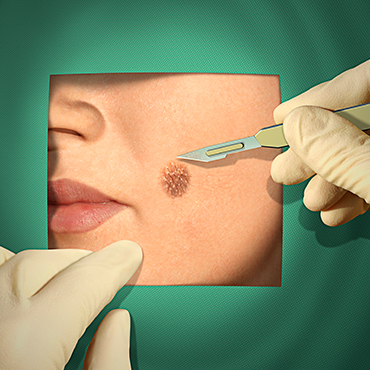In wide-local excision, the skin cancer and a small margin of healthy tissue around it is cut out, usually in a football-shaped ellipse. Once the tissue has been removed, the edges of the wound are sutured together. The tissue then is sent for processing and margin evaluation by a pathologist.
Wide-local excision often is used for Basal Cell Carcinoma and Squamous Cell Carcinoma on lower risk body sites such as the body, arms, and legs and for early stage melanomas that still are confined to the skin and have not spread into deep levels of tissue or other parts of the body. For small, well-placed tumors, it offers results that are both medically and cosmetically effective. It offers a high cure rate and allows for microscopic examination of surrounding tissue. The intent is to remove the entire lesion, but there is a possibility that the area requires further surgery in the event that the entire lesion was not removed in this procedure.


